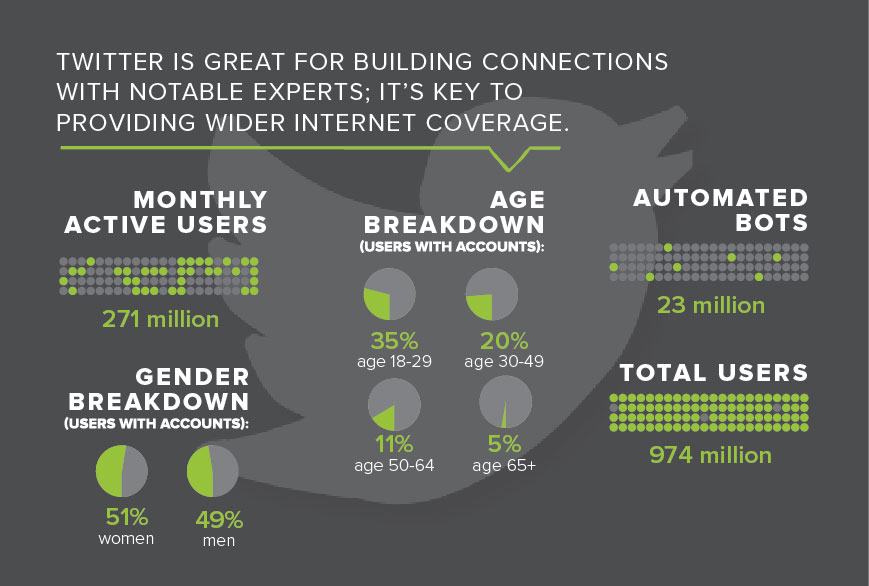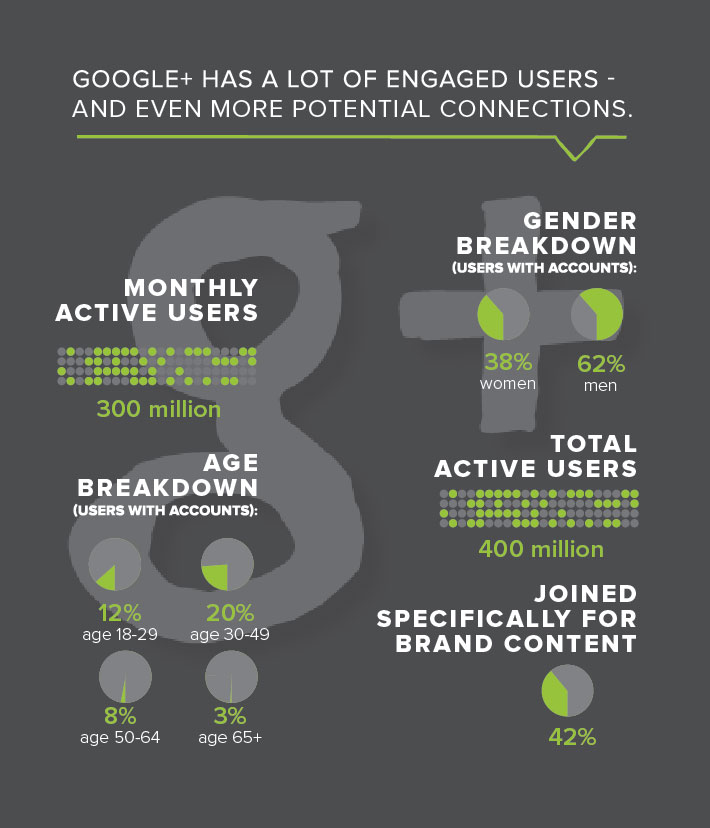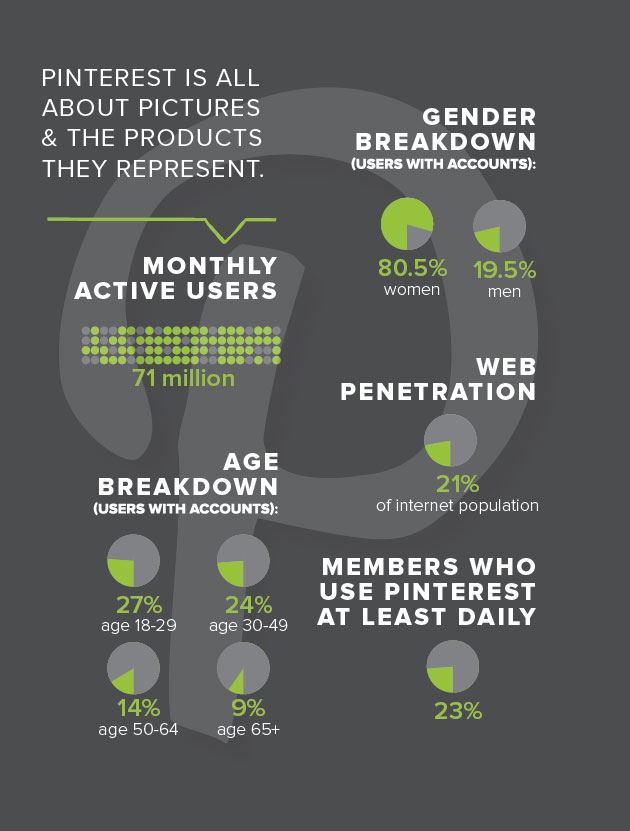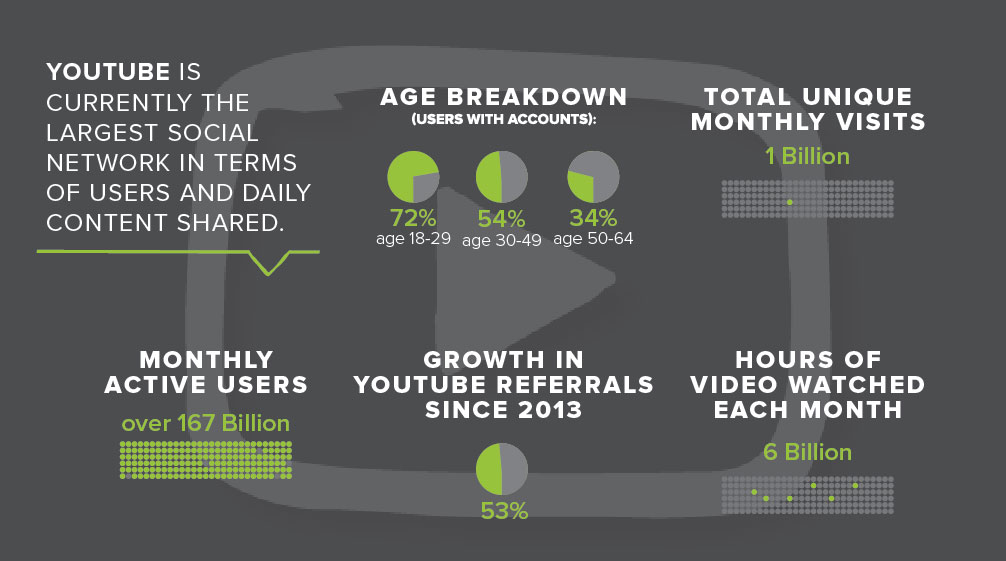Fact: The average company uses at least 6 networks for social marketing.
Fiction: The average company feels confident they’re reaching appropriate audiences with their social marketing.
Unproven fact: At some point, every one paid to work on marketing fears their posts on various networks are sent off into the ether – never to be seen by the eyes of caring audiences.
When my coworker Kristen Fritz and I recently hosted a webinar: 4 Trends for Social Marketing in 2015, we explored the top components to include in your social marketing for the New Year. We expected questions about bid strategies for social ads, or the best approach to season postings with videos. But a more prominent trend emerged: Which network should I use? Here’s a small sampling of the dozens of queries we fielded after the event (any of them sound familiar?):

- What’s the best network to reach an older audience?
- What channel is best for B2B or B2C?
- Can I reach seniors on social? Which platforms?
- If I’m running campaigns in different verticals, which networks are the best to use?
- I’m a 55-year-old female, and Twitter is a scary place. Where can my business reach other women my age?
We answered them drawing from the knowledge of past experiences and user trends. But we wanted to give these loyal attendees a quick reference tool, so we worked with one of our designers on a cheat sheet with a snapshot of network demographics. It ended up similar to this graphic, which we are now happy to share with you. (And full disclosure: We definitely think Instagram and SnapChat deserve your consideration if you’re in an advanced state of social marketing, but they’re not included in the priority networks we highlight here.)
Be sure to view the full infographic – your quick breakdown to who’s on which network, and why it might be right for marketing. And you can get a much more in-depth overview of which networks to use (and HOW) in Brafton’s latest eBook.
Facebook: The marketing powerhouse
 Everyone and their mother is on Facebook. It’s use by 84% of Americans between 18 and 30, and almost half of people over the age of 65. Most users log on daily, so it could be a good way to get into their routines – but be aware: Facebook has made it difficult to reach users, thanks to tweaks to its algorithm that, frankly, seem to reward ads.
Everyone and their mother is on Facebook. It’s use by 84% of Americans between 18 and 30, and almost half of people over the age of 65. Most users log on daily, so it could be a good way to get into their routines – but be aware: Facebook has made it difficult to reach users, thanks to tweaks to its algorithm that, frankly, seem to reward ads.
Who uses it? Everyone.
Who should use it to market? Brands in any vertical, targeting any demographic could benefit from a Facebook presence…
Tip: B2Cs that offer promos and discounts will find their sweet spot fast, but B2Bs who use it to give a peek behind the curtain and play up their personality of their employees also stand to win. (Learn more in our related webinar.)
LinkedIn: The hub of the commercially minded
This network appeals to a comparatively older demographic.
Who uses it? Professionals of all ages.

Who should use it to market? Business-facing consultants or product developers should definitely use LinkedIn. B2Cs may find value if they are promoting a specific event for professionals, or for recruitment.
Tip: Go beyond the daily posts to manage Communities for a brand. The average user is part of 7 groups (at least). Also, encourage key corporate executives to post their original ideas directly on LinkedIn (or help them do it). It’s a great way to drum up interest in key employees – which ultimately looks good for your company while benefitting them. (Posting blogs directly on LinkedIn is one of MY New Year’s marketing resolutions.)
Get more ideas on how to best use any and every social network in your marketing strategy in our related eBook: Content for social: Join the party that’s right for your business.
Twitter: Where influencers rub elbows
This is a widely used network, where interactions can seem shallow but it’s easy to give a s/o or attempt a conversation starter with your potential customers, partners or general marketing crushes.
Who uses it? Male and females (generally) under the age of 50, consumers and professionals alike
Who should use it to market? If you’re a B2B or B2C trying to engage Millennials or GenY, Twitter is worth your time. The stats show usage drops with demographic age, but experience shows the Brafton teams that if you’re marketing to a tech- or social-savvy industry audience you’ll find users of a wider age range.
Tip: Lay on the quips and pics. Things happen at the speed of scrolling newsfeeds on Twitter, so stand out with images, and by using your extremely limited words wisely. You’ll be noted for packing a lot of personality into a tiny Tweet. Site links earn traffic, but remember to also proactively engage users with @mentions, @replies and comments in convos according to hashtag.
Googleplus: The book club.
 Think of Googleplus as a special interest club. The demographic data suggests the network kills it with 300 million active monthly users, but it can seem less hopping when you log on. (Does signing into my email mean I’m an active user?) The key is to find people using Communities around your vertical.
Think of Googleplus as a special interest club. The demographic data suggests the network kills it with 300 million active monthly users, but it can seem less hopping when you log on. (Does signing into my email mean I’m an active user?) The key is to find people using Communities around your vertical.
Who uses it? Most Gmail users – almost by default. Especially people working or interested in tech platforms, but users vary.
Who should use it to market? Any company interested in boosting SEO via social. But in truth: Do some research. Are there vibrant communities discussing issues related to your products or services? You can find shutterbugs nerding out over camera features or photography; tech enthusiasts debating the latest smartphone; plenty of marketing consultants debating the best networks to use for branding, among other groups. And starting a community is a brilliant way to start building out your special interest on the network. (We offer a quick guide on Google+ communities.)
Tip: Post the site content you want indexed fast on Googleplus straight after its published. The network is great for alerting Google that you have fresh content, but remember that this is a *social* network: Comment on other users’ posts and give +1s to get them. Also, if it isn’t blatantly obvious, use the Communities.
Pinterest: The online catalog
 It’s the most visual of social networks, alongside Instagram. And early results show commerical success.
It’s the most visual of social networks, alongside Instagram. And early results show commerical success.
Who uses it? This network was once dominated by women, but it’s gaining male interest and users. It’s ok to load up product pictures. That’s a large part of what users want, and it’s predominated by 18- to 50-year-olds, who are among the heaviest online shoppers.
Who should use it to market? Definitely retailers. Consumer-facing brands that have products will find it’s a gold mine to get users Pinspired around products. Similarly, consumer-facing consultants or service providers who can show images of parties they’ve planned, homes they’ve decorated, nails they’ve painted, noses they’ve fixed, etc. may find a viewing audience. B2Bs – this should not be a priority, but if you invest in graphics, don’t write it off, especially if you’re working with a strong strategist.
Tip: Think bigger than products – depict lifestyles. Senior Social Marketing strategist offers a video tutorial on how to organize Pinterest boards for success. Tap into the mimetic desire of who people want to be, and offer tips to acheive it with your offerings, rather than focus on the offerings alone. And consider contests – our customers have seen huge success.
YouTube: The music fest
 Why does our team lovingly call YouTube the music fest? Because we know firsthand you might buy a ticket to Boston Calling specifically to see Edward Sharpe and the Magnetic Zeros, but then you’ll end up catching (and loving) Magic Man. With all the related videos a simple click away, you can happen upon viewing audiences with the right optimization.
Why does our team lovingly call YouTube the music fest? Because we know firsthand you might buy a ticket to Boston Calling specifically to see Edward Sharpe and the Magnetic Zeros, but then you’ll end up catching (and loving) Magic Man. With all the related videos a simple click away, you can happen upon viewing audiences with the right optimization.
Who uses it? Baby Boomers and tweens alike break up their days with YouTube. It boasts 1 billion UNIQUE monthly users.
Who should use it to market? Anyone investing in videos as part of their content strategy. This is a great network to build a social – and search – presence around your videos.
Tip: Set up your Playlists in a way that makes it easy for people to find your brand’s “series” they’re most interest in, and give videos search-friendly titles. Actually, we have a ton of tips from success Brafton’s customers have found on YouTube – check out our YouTube Marketing Playbook for a complete breakdown.
Once again, check out our full infographic on social audiences of 2015 in the resource center on our site. And contact us with your questions about social and content marketing – we might just make you an infographic cheat sheet of answers!



